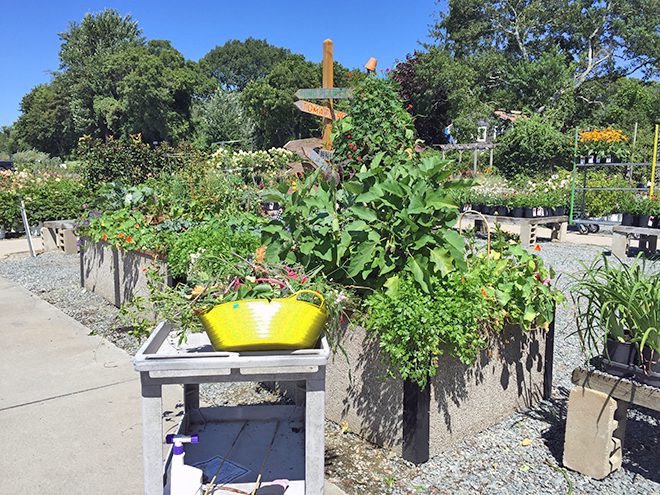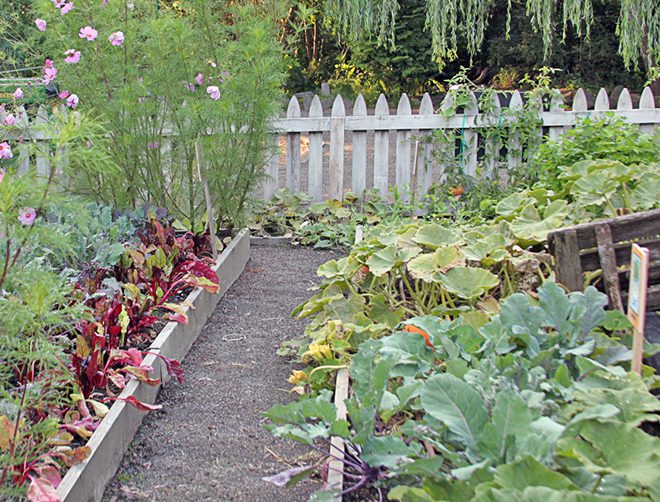What Is The Best Soil Mix For A Raised Vegetable Garden
February 25, 2018 | | Vegetables
"What kind of soil should I put in my raised beds?" our customers ask. This is one of the topics that will be covered in our upcoming program for inexperienced vegetable gardeners on March 11th. Raised beds are one method of growing vegetables, and in areas like Cape Cod where the soil is often sandy, it's a way to quickly provide a layer of loose, organically rich soil that sits on top of the native soil.
Here are a few tips for starting out with raised beds:
- Whether you have sand or clay, turn the native soil either before constructing the raised beds or before filling them. If the area was lawn, turn the turf right into the ground. You can turn the soil down about 10″ with a shovel or tiller.
- After the ground is tilled, fill your beds on top of this loosened ground. Do not put a layer of plastic, landscape fabric or other material on top of the native ground before filling unless your raised beds are a good 3 feet high. Your plants will benefit from having deep soil to sink their roots in.
- Fill your beds with a combination of loam and compost – use more loam than organic matter. A ratio of 3/4 parts loam to 1/4 part compost is fine, but more compost is not a good thing.
- Do not fill beds with potting soil, although over time if you want to empty pots that were filled with potting soil into the raised bed that's fine. Potting "soil" is actually a mix of peat moss, vermiculite, and some other organics such as bark, compost etc. This isn't bad for your beds, but it's too light to be used alone for growing veggies.
- Do not use pure peat moss. Do not fill with pure compost.
- You can use bulk loam and compost, or bagged loam and compost, depending on the size of your beds and your budget. If you have your own homemade compost, that is great too. Composted manure can be used in place of other compost.
- Fill the beds so that the soil/compost mix comes to the top of the raised bed. It will settle and sink at least 2 inches in the next two years, so if you use less you'll end up with beds that don't contain enough soil.
- Once beds are filled, rake to smooth the contents but don't step on the soil or tamp it down in any fashion. Let the rainfall and your watering settle the contents without pressing out air spaces. Remember that the roots of your plants need soil, organic matter, water and air.

These are the high raised beds we sell at Country Garden. This tall version is perfect for people who can't bend over well or get down on hands and knees. Here you see how the bed looked when first planted in early June. We filled

And here is how that bed looked in early September! I took this photo when I was clearing out any plants that were finished, and pulling a couple random weeds. Although raised beds have fewer weeds than the native ground, you will find them hiding among your veggies so be on the lookout. Nature always finds a way to blow some weed seeds into good, fertile soil!

When your raised beds are very shallow, be sure to till the native soil underneath them so that the roots of your plants can grow down into the ground. If your beds will be as shallow as these, amend the native soil with compost or composted manure before tilling or turning it, then fill the beds on top of that amended area.
What Is The Best Soil Mix For A Raised Vegetable Garden
Source: https://www.hyanniscountrygarden.com/soil-raised-bed-vegetable-gardens/
Posted by: hernandezflery1974.blogspot.com

0 Response to "What Is The Best Soil Mix For A Raised Vegetable Garden"
Post a Comment